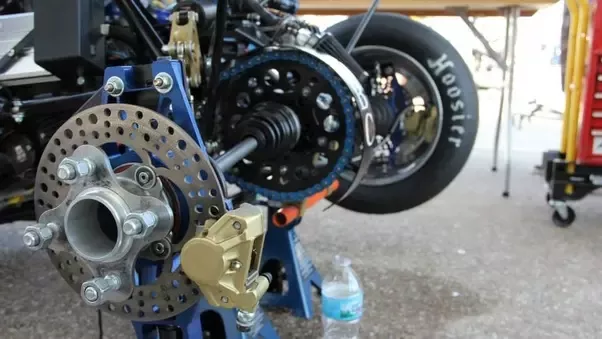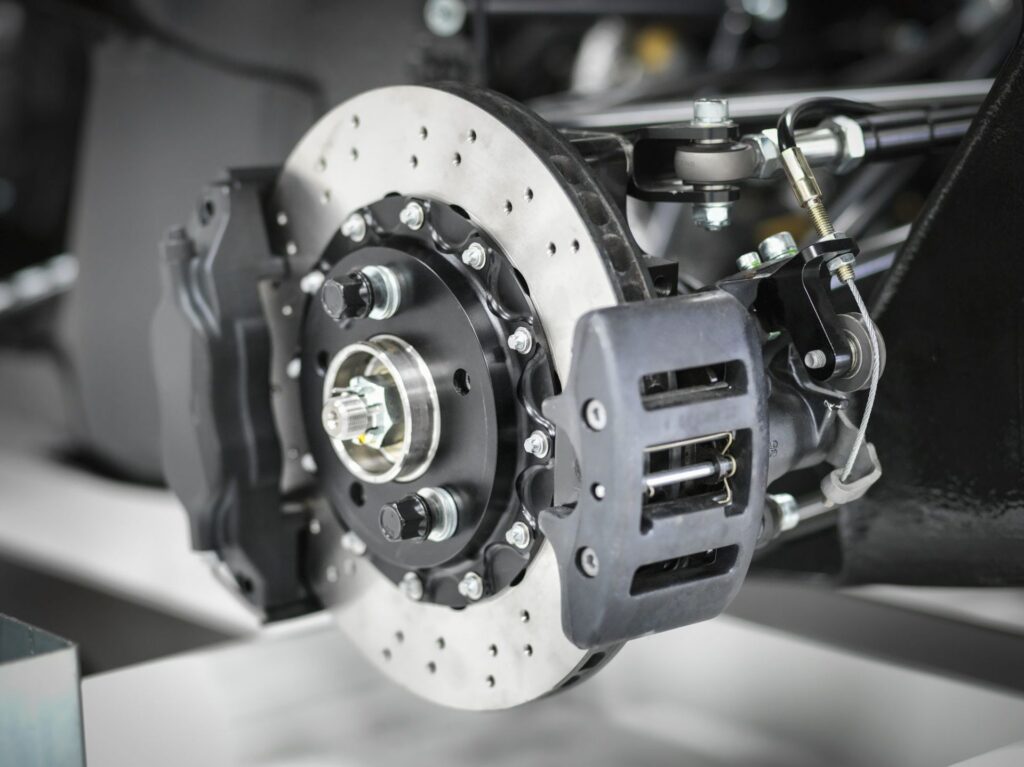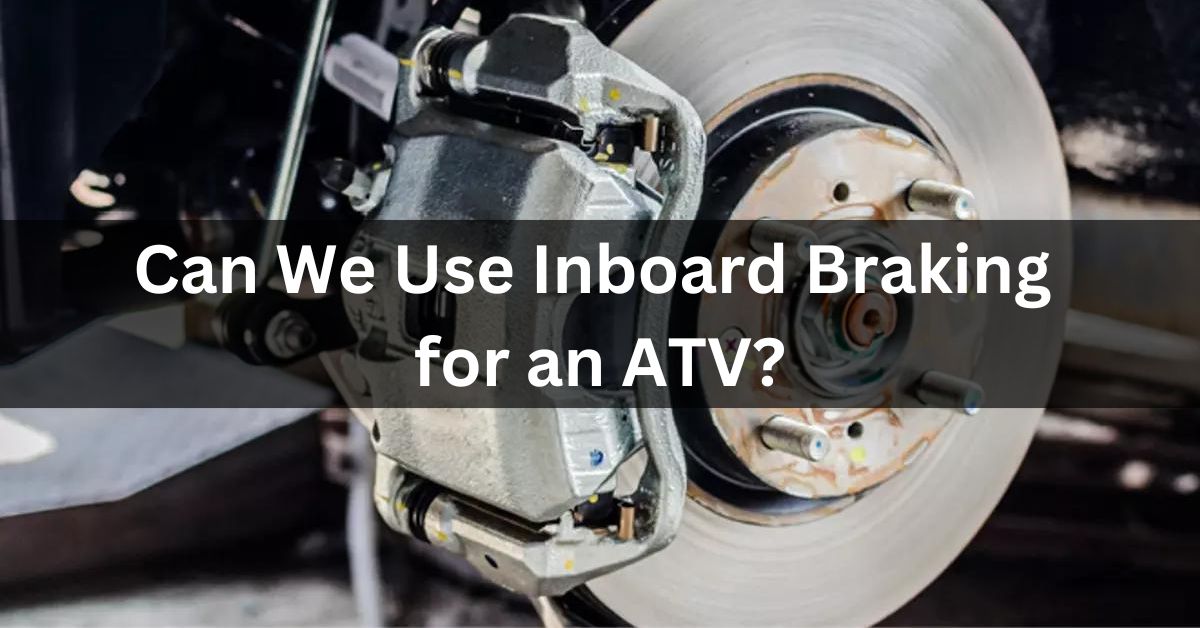Yes, using inboard braking for an ATV is a good idea. It helps with torque needs, preserves wheel bearings and CV joints, and can be used alongside a single disc rotor for rear braking. Pneumatically actuated disc brakes on a straddle-type ATV can be compatible with this setup.
This comprehensive guide delves into the possibilities, advantages, challenges, and safety considerations of using inboard braking for ATVs.
Advantages Of Inboard Braking Today — Let’s Explore It!

Firstly Improved Handling and Stability:
Better weight distribution from inboard braking can improve handling and stability, especially on difficult slopes.
Less likelihood of the wheels locking up or coming off the ground exists when the braking force is applied more closely to the center of the wheelbase. In the end, this results in a more stable and comfortable driving experience.
Then it’s important to check the Efficient Braking System:
When you use inboard braking, the force of braking goes straight to the wheels. This makes the wheels respond faster and helps the vehicle stop at a shorter distance.
This is really important when you’re driving on tough paths and need to stop quickly because of sudden barriers.
Last but not least study Space Efficiency:
When the brakes are made as part of the wheels on an ATV, the designers of the ATV can use the space more effectively.
This might mean they can add more parts or make the ATV able to carry more things, like stuff you want to take with you.
Read: ATV Engine Stalls on Heavy Braking – Causes and Solution Consider in 2023!
Disadvantages Of Using Brakes Inside – Let’s Learn About Them!

It Must Cause Heat debasement:
When brakes are put inside the wheels of a vehicle, they can make the wheels get hot. To stop the wheels from getting too hot and affecting how well the brakes work, it’s important to use special ways to cool them down. These methods can include using things like airflow vents, heat shields, and special materials that can handle the heat better.
Maintenance Complexity:
Improving and taking care of brakes that are inside the wheels might need special know-how and tools. This might mean that looking after them could be more expensive than taking care of the brakes on the outside of the wheels.
Initial Cost:
Adding brakes inside the wheels of ATVs might make them cost more to make. People who want to buy them will need to think about whether the advantages are worth the higher initial price.
Read: ATV Engine Dies When I Hit The Rear Brakes – Troubleshooting and Solutions!
Precautions Of Using Inboard Braking for an ATV? –Take Important Steps For Safety Now!
Learning Curve:
Riders who are used to regular brakes might take some time to get used to the way inboard brakes work.
It’s necessary to practice and become comfortable with inboard brakes so that you can use them without any danger.
Redundancy and Reliability:
Off-road vehicles like ATVs need brakes that work well and can be trusted. The companies that make these vehicles should create brake systems inside the wheels that have backup plans. This way, even if a part of the brakes stops working, the brakes will still be able to stop the vehicle safely.
Emergency Situations:
When there’s a sudden problem, riders use their brake memory. Inboard brakes should work smoothly to avoid confusion and help riders stop quickly and safely.
Read: Front End Rattling When Using ATV Rear Brake – Everything You Need To Know In 2023!
FAQ’s
1. Which braking should be used for an ATV, inboard or outboard?
For ATVs, inboard brakes are usually better because they offer advantages like improved safety and performance.
2. Can I upgrade my current ATV to have inboard brakes?
Inboard braking is a design where the braking components are placed inside the wheel. If your ATV doesn’t already have this system, you can upgrade it to have inboard brakes. This can potentially improve your ATV’s braking performance and safety.
3. Are inboard braking systems more expensive to repair?
Yes, inboard braking systems can be more expensive to repair compared to traditional braking systems.
4. Is inboard braking only suitable for racing vehicles?
No, inboard braking is not only suitable for racing vehicles. It can be used in various types of vehicles for improved performance and safety.
Conclusion:
As technology evolves, inboard braking could play a significant role in shaping the future of ATV performance and safety. So,
Yes, It’s good because it’s helpful with power needs, keeps wheel parts safe, and can work with one rear brake disc. This setup can also fit well with disc brakes that work with air on an ATV you straddle.
However, it’s important to know that repairs might cost more, and proper training is needed for the new brake setup. Also, make sure the brakes work well before riding for safety.
Happy Riding!
Related Articles
- How Do I Know If My Atv Is Running Lean? – Symptoms Of A Lean ATV Engine
- How To Reverse Polarity On An ATV Starter? | Steps And Best Info In 2023
- How Long Should I Let My Atv Warm Up? | Tips To Prepare Your ATV For Cold Weather
- What Does Override Do On Atv? || Complete Information About Override Button
- Why Does My Atv Die When I Give It Gas? | 5 Reasons & How To Fix The Issue
